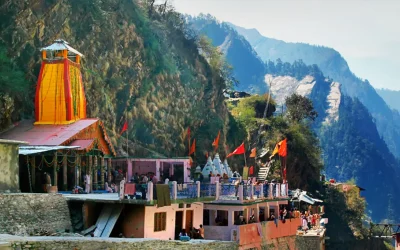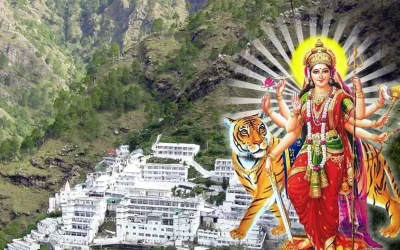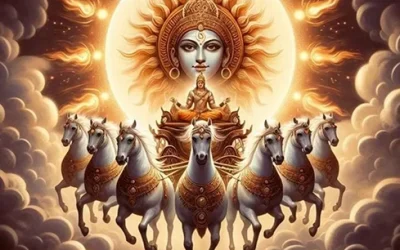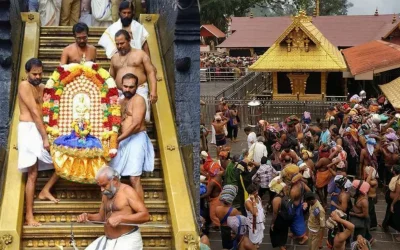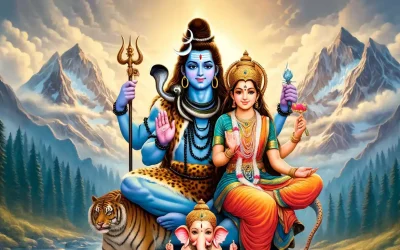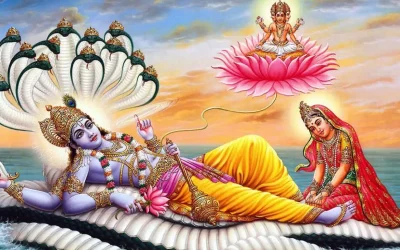Exploring Sacred Rivers in Hinduism: Rituals for Purification and Rebirth
As dawn comes, the sun’s golden light creeps across the silent waters of the Ganges. The gentle ripples and the bell chime in harmony with the morning prayers softly chanted. The air is filled with fragrant from the incense and fresh flower garlands.
This is a sight seen and relished by millions at the sacred rivers of India. They are more than mere geographical locations; they are divine lifelines bringing purification and the promise of spiritual rebirth.
Divine Personifications of Sacred Rivers
In Hindu mythology, rivers are not simply bodies of water but rather divine beings themselves. Most of them are personified as goddesses, each with a unique tale and role in the universe. The Ganges, or Ganga, is perhaps the most revered river, described as the goddess of purity and a path toward moksha, or liberation.
According to myth, King Bhagiratha prayed to Lord Brahma to bring the sacred Ganga River to Earth. Brahma granted his wish, and Ganga descend from heaven. To prevent her powerful flow from overwhelming the Earth, Lord Shiva caught her in his matted hair and later released her gently, letting her purifying waters flow down to Earth.
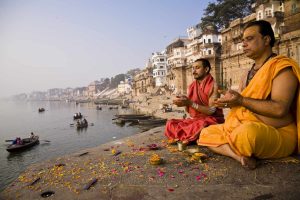
Yamuna, the sister of Yama, the god of death, represents life and fertility. Saraswati, once a river goddess, later evolved into the deity of knowledge, music, and art. Each of the rivers—Narmada, Kaveri, and Godavari—carries a divine legacy that is tied to acts of penance, purification, and creation.
The name Brahmaputra means “son of Brahma.” The story goes that Brahma was so impressed by the devotion of a sage named Shantanu and his wife, Amogha, who resided along the banks of the river Lohita, that he gifted them a divine child who transformed into a river upon birth. This river, the Brahmaputra, became a sacred site where deities and celestial nymphs, known as apsaras, would come to bathe.
These are not mere fables but significant expressions of the blending of nature with divinity in Hinduism.
Rituals of Purification and Spiritual Cleaning
Sacred rivers play a central role in Hindu rituals of purification. Pilgrims and devotees gather along their banks to bathe, believing that this act cleanses all sins and enables spiritual renewal. “Ganga Aarti” is one of the major rituals performed in Varanasi, involving the floating of lamps as offerings of light to the holy deity.
Conversely, Narmada is worshipped for its parikrama—a challenging pilgrimage where devotees walk around its entire length, seeking purification and spiritual elevation. Similarly, on certain festival days, bathing in the Godavari is believed to wash away many lifetimes of karmic burdens.
These rituals are more than acts of devotion; they are transformative experiences linking the devotee to their inner self and the divine cosmos.
Rivers and Their Festivals: Celebrating the Divine
Festivals like the Kumbh Mela honour the sacred rivers magnificently. Triveni Sangam, the confluence of the Ganges, Yamuna, and Saraswati rivers in Prayagraj, India, is a focal point of this festival. Over three million people visit to bathe at this sacred site during auspicious moments. The belief is simple yet profound: a dip here liberation from the cycle of rebirth.
Pushkaram is another significant festival, celebrated for specific rivers like Godavari and Krishna. Devotees all gather at the river banks, conduct worship rituals, and seek the blessings of the rivers. Such events are not merely religious gatherings but cultural spectacles that celebrate the unbreakable bond between humans and rivers.
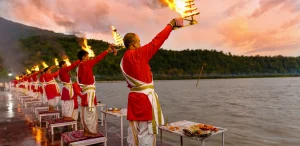
Legends and Lore: Stories of the Holy Waters
There are wonderful stories about rivers in Hindu scriptures. One of the most popular is the story of Ganga’s descent from heaven, symbolizing her role as a purifier of sins. This legend highlights the balance between nature’s fury and benevolence, as embodied by Shiva taming Ganga’s tumultuous descent.
The story of Kaveri revolves around the sage Agastya and the apsara Lopamudra. Lopamudra yearned for the sacred Kaveri River to flow through her hermitage. It was a desire rooted in her devotion and connection to the divine. Agastya Muni recognizing her sincerity blessed her wish, and the river began its journey into her abode.
Similarly, the divine origin of Brahmaputra as the son of Brahma underscores the celestial stature of this river. These are not just myths; they are allegories that convey deep spiritual truths and teach ethical lessons.
Present-Day Relevance: Challenges and Strategies
In modern times, these rivers remain integral to Hindu practices but face significant challenges, particularly pollution. The Ganges, for instance, is not only a sacred river but also a lifeline for millions. Efforts like the “Namami Gange” program aim to rejuvenate its waters, reflecting the enduring spiritual and emotional bond people share with it.
These rivers continue to inspire devotion and spiritual exploration, standing as symbols of strength and purity against the strains of modernization.
Personal Reflections and the Call of Sacred Waters
It is a transformative experience for those who have walked along the banks of the Yamuna or taken a refreshing dip in the Ganges. The rituals performed with absolute devotion, and the feeling of connection to a greater good leave an indelible mark.
If you haven’t yet experienced the spiritual serenity of these rivers, let this be your inspiration. Visit, reflect, and immerse yourself—not just in their waters but in their timeless wisdom and cultural heritage.
Conclusion: Guardians of Purity and Spiritual Rebirth
Sacred rivers in Hinduism are not just natural wonders; they are divine entities that purify the body, mind, and soul. From the cleansing embrace of Ganga to the transformative parikrama of Narmada, these rivers guide millions toward enlightenment and rebirth.
Discover the holy rivers of Hinduism and find their divine peace. Participate in their rituals, understand their stories, and support their conservation to keep them as eternal emblems of purity, inspiring future generations.

